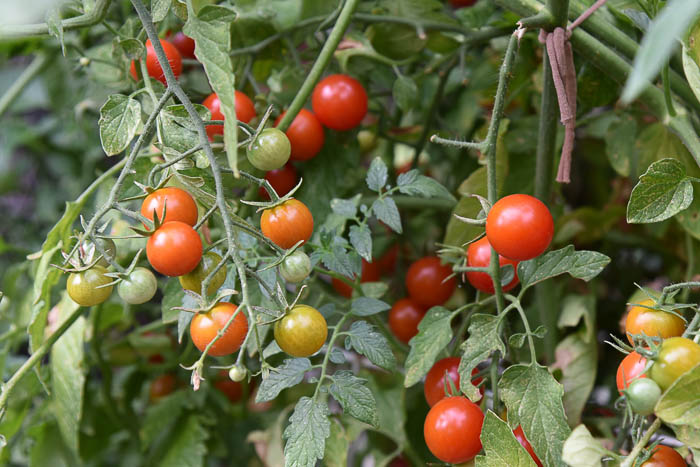Yard Mistakes: What Plants Don't Like Epsom Salt and Exactly How to Avoid Them
Yard Mistakes: What Plants Don't Like Epsom Salt and Exactly How to Avoid Them
Blog Article
Find Out About the Details Plants That Are Detrimentally Influenced by Epsom Salt Application
Epsom salt, a prominent home remedy for different gardening woes, is often applauded for its valuable effects on plant development. However, not all plants respond positively to its application. Recognizing the certain plants that can be negatively influenced by Epsom salt is crucial for any gardener looking to maximize their plant treatment regimen. Roses, tomatoes, azaleas, peppers, and rhododendrons are simply a couple of examples of plants that may not respond well to Epsom salt. The reasons behind these negative effects and how to minimize them are essential understanding for preserving a growing yard.
Roses

Roses, especially sensitive to modifications in their setting, can be adversely impacted by the application of Epsom salt. While Epsom salt is commonly used as a plant food to advertise plant development and boost blooming, roses are one of the plants that do not react well to its application. The high magnesium web content in Epsom salt can disrupt the uptake of other vital nutrients by the rose plants, causing shortages that manifest as yellowing fallen leaves or stunted growth.

Tomatoes
While Epsom salt is typically proclaimed as a solution for various plant problems, consisting of bloom end rot in tomatoes, its application can lead to detrimental outcomes if not utilized sensibly. Extreme Epsom salt, which is magnesium sulfate, can interrupt the delicate nutrient balance needed by tomatoes, potentially leading to deficiencies in other necessary nutrients like calcium. When taking into consideration the usage of Epsom salt on tomatoes, it is critical to stick to advised application rates and soil testing to avoid unintended repercussions on the total wellness and productivity of these cherished garden plants.
Peppers
Peppers, admired for their different colors and degrees of spiciness, can show susceptibility to unfavorable impacts from Epsom salt when not applied with care and factor to consider for their particular dietary needs. what plants don't like epsom salt. Peppers, coming from the Solanaceae household, require a delicate equilibrium of nutrients to thrive. While Epsom salt is known to increase magnesium degrees in plants, excessive application can disrupt this equilibrium, leading to adverse impacts on pepper plants
When peppers are subjected to high degrees of magnesium from Epsom salt, it can disrupt the plant's capacity to take in other necessary nutrients like calcium and potassium. This discrepancy may show up in signs such as fallen leave staining, stunted growth, and minimized fruit production. In addition, the extreme magnesium can change the dirt pH, more exacerbating nutrient uptake issues for peppers.

Rhododendrons
Offered the level of sensitivity of certain plant varieties to imbalances brought on by Epsom salt, it is necessary to take into consideration the influence on Rhododendrons, which also call for details nutrient degrees to flourish. Rhododendrons are acid-loving plants that prefer acidic dirt conditions with a pH range in between 4.5 and 6.0. Epsom salt, chemically called magnesium sulfate, can modify the soil pH and interfere with the delicate balance of nutrients More hints necessary for Rhododendron health and wellness.

To keep the image source optimum development and health and wellness of Rhododendrons, it is essential to prevent the unplanned use Epsom salt and instead concentrate on providing the specific acidic soil conditions and nutrients that these plants need for flourishing.
Azaleas
Azaleas, recognized for their dynamic blooms and wide array of shades, are ornamental shrubs that come from the Rhododendron genus. These prominent blooming plants are usually located in landscapes, parks, and gardens due to their beauty and versatility. Azaleas are sensitive to modifications in dirt pH levels, which can dramatically influence their growth and general wellness. While Epsom salt is commonly used as a remedy for magnesium shortage in plants, its application to azaleas can have unfavorable effects.
Azaleas choose a little acidic dirt problems, and an extra of magnesium from Epsom salt can interrupt this equilibrium, leading to nutrient imbalances and prospective poisoning problems. The inaccurate application of Epsom salt can result in stunted growth, yellowing of leaves, and overall decrease in the health of azaleas.
Final Thought
To conclude, it is necessary to be familiar with the details plants that can be detrimentally influenced by the application of Epsom salt. Roses, tomatoes, peppers, rhododendrons, and azaleas are some examples of plants that might not take advantage of Epsom salt and could even endure injury. It is essential to research and recognize the requirements of each plant species prior to making use of Epsom salt as a plant food to ensure their wellness and health.
Recognizing the specific plants that can be detrimentally affected by Epsom salt is crucial for any type of garden enthusiast looking to enhance their plant care regimen. While Epsom salt is commonly utilized as a fertilizer to promote plant development and boost flowering, roses are one of the plants that do not react well to its application.Extreme use of Epsom salt can likewise result in an accumulation of salts in the dirt, leading to root damages and my site dehydration of the rose plants. While Epsom salt is recognized to improve magnesium degrees in plants, excessive application can interrupt this equilibrium, leading to damaging effects on pepper plants.
The high salt web content in Epsom salt can additionally dehydrate Rhododendron origins, creating further stress and anxiety and damages to the plant. (what plants don't like epsom salt)
Report this page